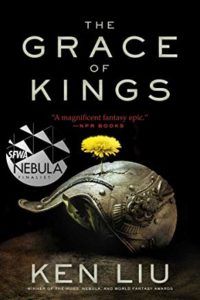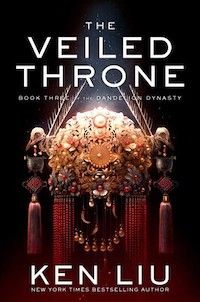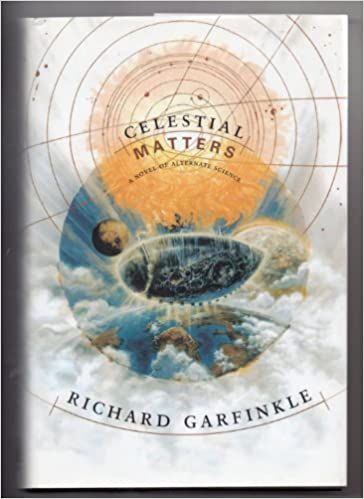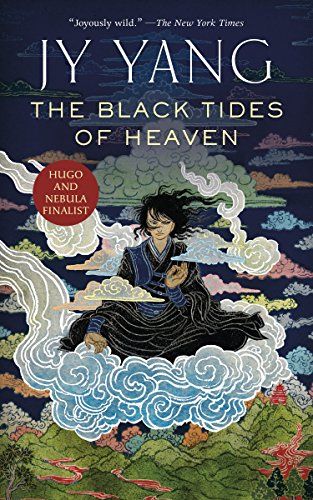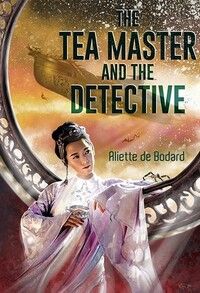To start, read this August 2020 tweet by Fonda Lee, author of the acclaimed Green Bone Saga: In the long history of speculative and SFF genres, silkpunk is pretty new. It was invented by Ken Liu to describe his 2015 novel The Grace of Kings. Liu coined the term, and wrote a post on his website to delve into its definition. Liu’s post begins with: “No, [silkpunk is] not “Asian-flavored steampunk.” No, it’s not “Asian-influenced fantasy.” No, it’s not… — Fonda Lee (@FondaJLee) August 2, 2020 It’s a very specific technology and literary aesthetic. The reason for listing these quotes right off the bat is to curtail any confusion as quickly as possible. I’ll delve more into its definition, history, and examples, but it is just as important to describe what silkpunk is NOT. So take note book bloggers, reviewers, etc: Silkpunk does NOT apply to every speculative, science fiction, or fantasy book inspired by Asian history or culture. Got it? Good. Let’s continue.
Silkpunk: Origins
Ken Liu invented silkpunk to describe his 2015 novel The Grace of Kings, the first novel in his Dandelion Dynasty series. The world of the Dandelion Dynasty is a mesh of technology and magic, but not only that. It is also an exploration in language. This is where the “silk” comes from. As such, silkpunk would not fit in a direct analogy with steampunk. Silkpunk is technology and poetics. It is engineering and language. Again, it’s best to use Liu’s own words here: Liu goes onto to describe the vocabulary of his books stemming from items of historical importance to the people of East Asia and the Pacific Islands. It’s a “technology language.” It’s more organic than steampunk. With silkpunk, form is just as important as function. For example, in Liu’s work, there are submarines that look and move like whales through the water. It’s not a big chunk of metal coughing steam. It is beautiful. It is art. Ken Liu, Nexus Media News, “Silkpunk Sci-Fi Author Ken Liu Talks Fantasy, Technology and the Future of the Human Race“ The “punk” part, however, is pretty classic to the other “punk” sub-genres. Resistance and rebellion against authority are key elements.
The Circle of Silkpunk
Now, we can all agree from the above that silkpunk is very specific, and this can pose a great challenge in brainstorming examples that might fit under its umbrella. In a 2019 interview with the publication Goldthread, Liu acknowledged this challenge with creating the term silkpunk: With that in mind, are there any truly acceptable examples outside of Liu’s own trilogy? Or has the term silkpunk evolved since? “I cheated,” [Liu] says. “I drew a little circle around myself and said my books are ‘silkpunk.’” It may have been out of commercial convenience, but Liu also wanted to challenge the assumption that engineering was a quintessentially modern and Western practice. Gold Thread, “Ken Liu on Chinese sci-fi, ‘silkpunk,’ and his distrust of labels“
Examples of Silkpunk
You may see lists on Goodreads or around the internet listing a bunch of “silkpunk books” or “silkpunk essentials,” but let’s refer back to Fonda Lee’s quote and Ken Liu’s details. Just because it’s inspired by Asian history or culture or is written by an Asian author, does NOT mean it is automatically silkpunk. When it comes to labeling books silkpunk, we need to carefully note the inspirations of engineering and language. With respect to Liu’s definitions (he did invent it, after all), the first two examples listed specifically mentioned by Liu as being silkpunk. Other examples are an attempt to apply Liu’s definitions to more recent releases. The below list is by no means exhaustive and very much up for debate.
Further Exploration
If you’re looking to explore silkpunk further, especially in regards to the very latest releases, Tailored Book Recommendations is a great place to start. Bibliologists with years of experience can point you in the right direction for books along the lines of silkpunk or other SFF sub-genre reads. It’s a great description, because the books gives us a world in which the empire of Alexander the Great has lasted thousands of years, and for thousands of year has been at war with the Empire of the Orient. There is an expedition to send a ship — sculpted from moon matter — to the sun to gain the ultimate weapon. There is technology language in this series (i.e. the art of slackcraft) and inspiration of antiquity. Yang also includes many queer and nonbinary characters. Their series has received numerous accolades; they were a finalist for the Hugo, Nebula, World Fantasy, Locus, and Lambda awards. De Bodard is well-known for her extensive worldbuilding in her Dominion of the Fallen series, and this novella is no different despite its short length. The Tea Master and the Detective won the Nebula Award for best novella and was a Hugo Award finalist. Book Riot also has other explorations of genre, such as an introduction to wuxia novels, a deep into defining the broad term “speculative fiction,” and a post on the sub-genre “slipstream.” Whatever your interest, it’s important to reiterate the origins of silkpunk and how easy it to use it as a blanket term. Don’t fall into that trap, dear reader. Remind yourself that silkpunk is a fascinating and unique sub-genre of technology and aesthetic. Respect its origins, check out the above examples, and immerse yourself in silkpunk’s artistry.




